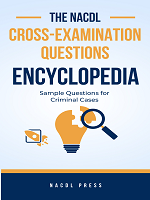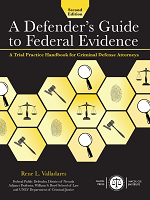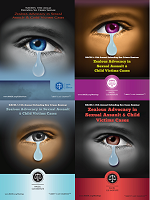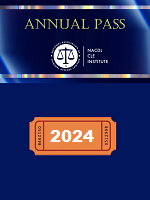Statement of Barry C. Scheck, Co-Director, The Innocence Project And President-Elect, National Association of Criminal Defense Lawyers
Washington, DC (February 10, 2004) -- The National Academies’ report released today, Forensic Analysis: Weighing Bullet Lead Evidence, demonstrates once again the value of peer-reviewed, open science. The FBI is to be commended for requesting this intensive review and the National Research Council for its comprehensive findings and recommendations.
However, had the FBI’s written and unwritten protocols for comparative analysis of bullet lead (CABL) been subject to the same rigors to which the scientific community holds itself, tainted convictions would have been avoided. CABL has most often been used when bullets collected at a crime scene are too fragmented for microscopic comparison or in cases in which no firearm was recovered. The lead fragments are spectrographically analyzed for comparison of trace elements associated with lead smelting with those in ammunition seized from a suspect.
CABL has not been admitted in all courts. In the courts where it has been admitted, juries have been misled into believing that profiles of trace elements – primarily arsenic, copper, tin, bismuth, silver and cadmium, and antimony, a hardening additive – are unique to a particular manufacturer, batch, or even box of bullets. Properly done, and given only the weight it deserves, metallurgical analysis can be a useful forensic tool, probative of innocence as well as guilt. But as the NRC report states,
CABL does not, however, have the unique specificity of techniques such as DNA typing to be used as stand-alone evidence. It is important that criminal justice professionals and juries understand the capabilities as well as the significant limitations of this forensic technique.
According to the FBI’s own estimate, CABL evidence has played a role in at least 2,500 cases and at least 500 trials over the past three decades. Each of these cases must be reviewed. Judges, prosecutors and defense attorneys must be notified, not just for exoneration of the innocent but apprehension of the guilty. Only the FBI knows what cases lead analysis testimony played a part. NACDL and the Innocence Project will work with the FBI and the courts in identifying and rectifying wrongful convictions based on overstatement of lead analysis evidence.
Until recently, FBI examiners misleadingly expressed high confidence or even certainty that crime scene lead fragments did or did not come from the “same box” of other ammunition in evidence. In cases where a so-called “match” was identified, the results have at times been devastating to the truth-seeking process, which is the essence of any criminal or civil trial. According to the National Academies and the FBI, examiners have worked on improving the accuracy of their testimony, avoiding expressions such as “match,” and other certitudes. All science is probabilities. In requesting the Academies’ National Research Council’s assessment of its technology and forensic testimony, the FBI is to be commended for moving in the right direction. But as the report recommends, judges, prosecutors, defense lawyers, and juries must be made aware of the limitations of CABL. As the committee itself analogized, finding a bullet fragement is “consistent” with another ammunition sample is circumstantial evidence – in the committee’s assessment, about as helpful as knowing that a defendant wears the same type and size shoe as a footprint found at a crime scene.
Because so much forensic science enters the courtroom before it has been adequately assessed by the scientific community at large, the Innocence Project and the National Association of Criminal Defense Lawyers call for a National Institute for Forensic Science. The role of the Institute would be much the same as the National Institutes of Health plays in assessing adequacy of medical treatments and drug efficacies. The FBI, which rightfully claims leadership in advancing new forensic technologies, is not equipped to validate itself, any more than any university or private research lab can validate its own research. Peer review, replication of results and publication for open and incisive debate are the hallmarks of good science. The FBI deserves validation where its techniques are valid, and suggestions for improvement where they are not.
The National Academies report, Forensic Analysis: Weighing Bullet Lead Evidence is available online at http://books.nap.edu/openbook/0309090792/html/index.html. A joint preliminary position paper by the Innocence Project and NACDL on improving the forensic sciences is at http://www.nacdl.org/public.nsf/freeform/forensic?opendocument.
Contacts
NACDL Communications Department
The National Association of Criminal Defense Lawyers is the preeminent organization advancing the mission of the criminal defense bar to ensure justice and due process for persons accused of crime or wrongdoing. A professional bar association founded in 1958, NACDL's many thousands of direct members in 28 countries – and 90 state, provincial and local affiliate organizations totaling up to 40,000 attorneys – include private criminal defense lawyers, public defenders, military defense counsel, law professors and judges committed to preserving fairness and promoting a rational and humane criminal legal system.






